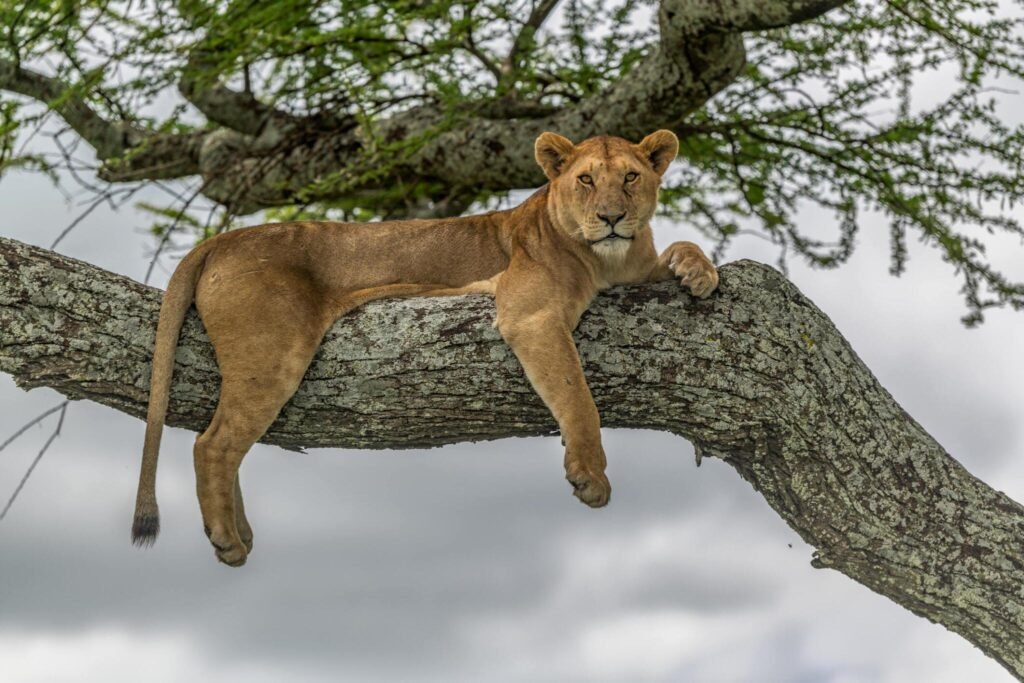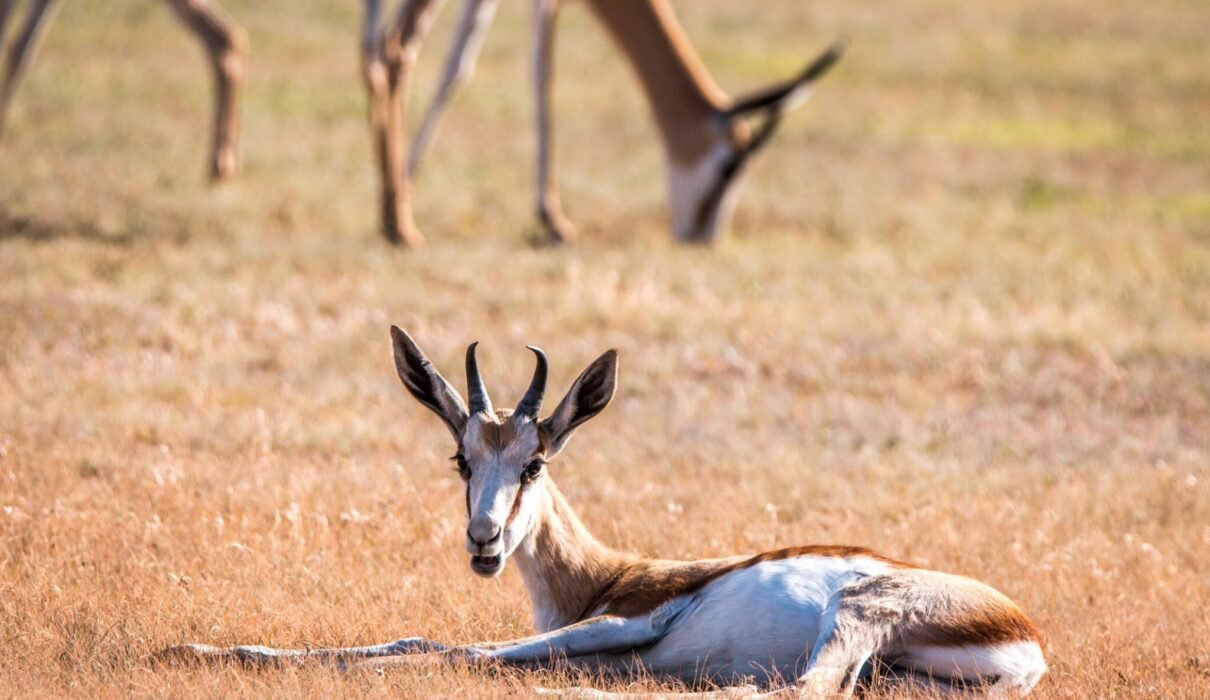Best Tanzania Safari Parks. Tanzania is home to some of the most iconic safari parks in Africa, offering unforgettable wildlife experiences. From the vast plains of the Serengeti to the breathtaking views of the Ngorongoro Crater, Tanzania’s national parks attract adventure seekers from around the world. This guide will introduce you to the best Tanzania safari parks, what you can expect to see, and how to make the most of your trip.
Plan your Tanzania safari adventure here for expert advice and customized itineraries

Best Tanzania Safari Parks – Serengeti National Park: The Heart of the Great Migration
Serengeti National Park is one of the most famous wildlife reserves in the world. Spanning over 14,750 square kilometers, it’s best known for the Great Migration, where millions of wildebeest, zebras, and gazelles move across the plains in search of fresh grazing
Wildlife Highlights
- Big Five: Serengeti is one of the best places to spot the Big Five—lions, elephants, leopards, buffalo, and rhinos.
- Migration: The park is home to the Great Migration, one of nature’s most spectacular events, happening between July and October.
Find out more about the Great Migration and Serengeti wildlife.
Best Tanzania Safari Parks – Ngorongoro Crater: A Natural Wonder
The Ngorongoro Crater is a UNESCO World Heritage Site and the world’s largest unbroken caldera. It’s one of the most popular safari destinations in Tanzania due to its rich wildlife and dramatic scenery. The crater is home to a permanent population of about 25,000 animals, including some of the highest densities of lions and hyenas in Africa.
Top Attractions
- Wildlife Concentration: Ngorongoro offers excellent opportunities to see lions, rhinos, elephants, and more.
- Scenic Views: The crater’s walls rise over 600 meters, offering visitors spectacular views of the landscape below.
Explore Ngorongoro Crater and its unique ecosystem.
Best Tanzania Safari Parks – Tarangire National Park: Elephants and Baobabs
If you’re looking to escape the crowds, Tarangire National Park is a great choice. Located just a few hours from Arusha, it’s known for its massive herds of elephants and iconic baobab trees. During the dry season (June to October), Tarangire’s wildlife congregates around the Tarangire River, making it one of the best places for game viewing.
Why Visit Tarangire
- Elephants: The park is home to some of the largest elephant herds in Tanzania.
- Birdwatching: With over 500 bird species, Tarangire is a paradise for birdwatchers.
Learn more about birdwatching and wildlife in Tarangire.
Best Tanzania Safari Parks – Lake Manyara National Park: Famous Tree-Climbing Lions
Nestled between the Great Rift Valley escarpment and Lake Manyara, this park is one of Tanzania’s smaller but most diverse wildlife areas. Lake Manyara National Park is famous for its tree-climbing lions and large flocks of flamingos. The lush jungle-like forest is also home to elephants, hippos, and troops of baboons.
Wildlife and Scenery
- Unique Animals: Manyara’s lions are known for climbing trees, a behavior rarely seen elsewhere.
- Birdlife: The lake is a haven for flamingos and other bird species.
Find out more about Lake Manyara’s tree-climbing lions and flamingos.

Best Tanzania Safari Parks – Selous Game Reserve: Off-the-Beaten-Path Safari
For a more remote and untouched safari experience, Selous Game Reserve in southern Tanzania is the place to go. Covering an area twice the size of the Serengeti, Selous offers a wild and untamed safari experience with fewer tourists. The reserve is home to a wide variety of animals, including African wild dogs, hippos, and crocodiles.
Why Visit Selous
- Wild and Untouched: Fewer visitors make Selous one of Tanzania’s best-kept secrets.
- Boat Safaris: Explore the Rufiji River by boat, a unique way to see wildlife.
Discover more about Selous Game Reserve’s hidden gems.
Best Tanzania Safari Parks – Ruaha National Park: Tanzania’s Largest National Park
Ruaha National Park is the largest national park in Tanzania, offering a truly wild safari experience. Known for its rugged landscapes and baobab-studded hills, Ruaha is a great place to spot large predator populations, including lions and leopards. The park is also one of the best places in Tanzania to see greater kudu, a type of antelope with long, twisted horns.
Why Visit Ruaha
- Predators: Ruaha is home to one of the largest populations of lions in Tanzania.
- Remote Wilderness: Experience a truly off-the-beaten-path safari.
Learn more about Ruaha’s wildlife and landscapes.
Best Tanzania Safari Parks – Mikumi National Park: Tanzania’s Hidden Gem
Just a short drive from Dar es Salaam, Mikumi National Park is often overlooked by tourists, making it a peaceful alternative to more crowded parks. Mikumi is home to lions, giraffes, zebras, and a variety of bird species. Its open plains are reminiscent of the Serengeti, offering great game viewing opportunities without the crowds.
Wildlife Highlights
- Lions and Giraffes: Mikumi’s lions and giraffes are among the most commonly spotted wildlife.
- Birdwatching: Like Tarangire, Mikumi is a great place for bird enthusiasts.
Explore Mikumi’s untouched landscapes and wildlife.
Best Tanzania Safari Parks – Mahale Mountains National Park: A Chimpanzee Haven
If you’re interested in primate trekking, Mahale Mountains National Park is a must-visit. This park, located on the shores of Lake Tanganyika, is home to one of Africa’s largest populations of wild chimpanzees. Trekking through the park’s tropical forests to observe these intelligent animals in their natural habitat is a truly unforgettable experience.
Why Visit Mahale
- Chimpanzee Trekking: The park offers guided treks to see wild chimpanzees up close.
- Lake Tanganyika: After a day of trekking, relax on the shores of the world’s longest freshwater lake.
Learn more about chimpanzee trekking in Mahale Mountains.
Best Tanzania Safari Parks – Gombe Stream National Park: Follow in Jane Goodall’s Footsteps
Gombe Stream National Park is famous for the pioneering work of primatologist Jane Goodall. Like Mahale, Gombe is home to wild chimpanzees, but it’s much smaller and easier to access. Visitors can hike through the park’s forest trails and learn about Goodall’s groundbreaking research on chimpanzee behavior.
Chimpanzee Trekking
- Wild Chimpanzees: Observe the park’s chimpanzee families in their natural environment.
- Historical Significance: Visit sites where Jane Goodall conducted her research.
Discover Gombe Stream National Park’s importance in wildlife research.
Best Tanzania Safari Parks : Best Time to Visit Tanzania Safari Parks
The best time to visit Tanzania’s safari parks depends on your interests. The dry season from June to October is ideal for wildlife viewing, as animals gather around water sources, and vegetation is less dense. If you’re keen on witnessing the Great Migration, visit between July and October when the wildebeest cross the Mara River.
Seasonal Highlights
- Dry Season (June to October): Best for general wildlife viewing in all parks.
- Wet Season (November to May): Lush landscapes, birdwatching, and calving season in the Serengeti.
Learn more about the best times to visit Tanzania’s national parks.
Best Tanzania Safari Parks : Conclusion
Tanzania offers a diverse range of safari parks, each with its unique wildlife and landscapes. Whether you’re tracking the Big Five in the Serengeti, exploring the stunning Ngorongoro Crater, or seeking out chimpanzees in Mahale, you’re sure to have an unforgettable experience. Plan your trip to the best Tanzania safari parks and immerse yourself in one of the world’s top wildlife destinations.
For expert guidance and customized safari packages, visit Kilimanjaro Climb Specialist or Eddy Tours & Safaris.

